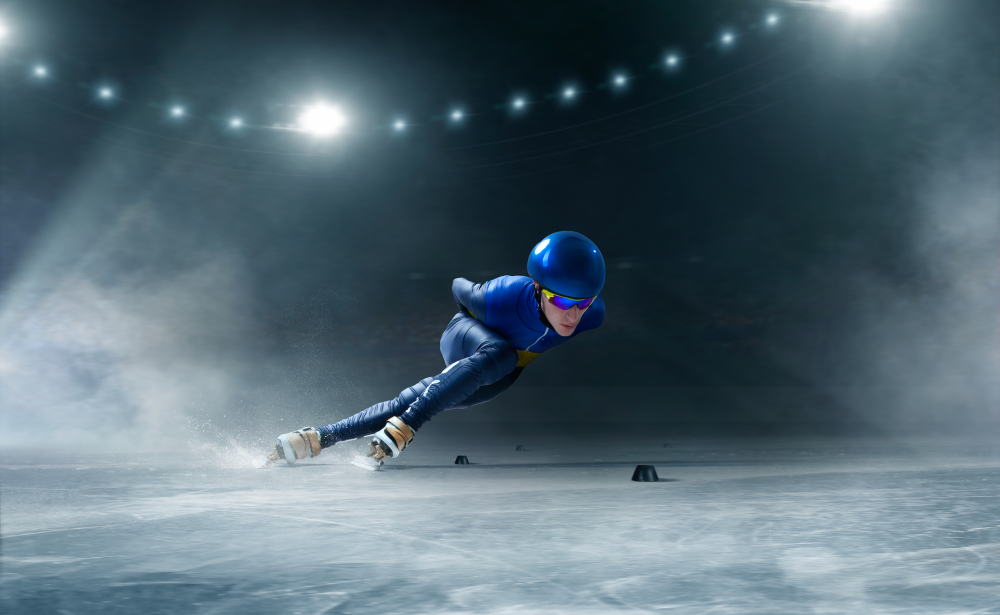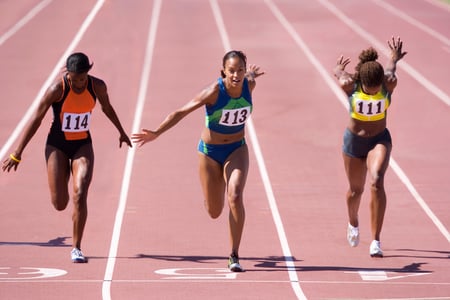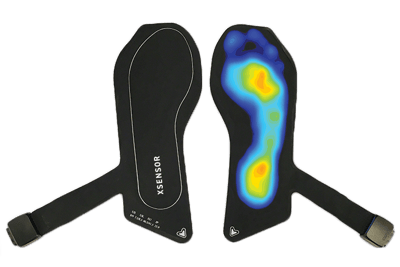
How Plantar Pressure Mapping Can Impact Speed Development
Speed: it’s not just a 90’s movie about a bus – it’s a fundamental biomotor ability required in athletic performance.
For sports where speed plays a critical role – like sprinting and speed skating – one of the main training goals is to improve an athlete’s speed mechanics.
Understanding which factors contribute to speed is crucial and research has been focused on understanding which physical and technical elements are the most important when it comes to speed performance.
Physical factors (i.e., strength and power capabilities) and neuromuscular properties – such as the percentage of fast twitch fibers and the length of muscle fascicles – are strongly correlated with sprinting performance. An athlete with good muscular strength of the knee, hip, and ankle extensors will have the ability to apply more force onto the ground, translating strength into an increase in speed abilities.
Technical elements can dramatically improve sprinting abilities by increasing motor and neuromuscular control, as well as improving intermuscular coordination and the ability to contract and relax muscles in the same movement.
By optimizing running mechanics, athletes can properly use their strength and integrate it into an efficient movement pattern without any energy leaks.
Foot Strike Dynamics and Speed
Foot strike dynamics have a big impact on the way an athlete applies and distributes forces onto the ground.
The foot is a complex system that works by precisely coordinating the timing of different elements (joints, muscles, tendons, and ligaments) as well as by continuously alternating plantar tissues between stiffness and flexibility.
The three zones of the foot (rearfoot, midfoot and forefoot) comprise different tasks that when integrated together, allows the foot to accomplish its dynamic function of mobile adaptor and rigid lever.
How to Use Plantar Pressure Data to Improve Speed Mechanics and Development
By observation alone, it’s almost impossible to understand how the quality and mechanics of running is going to impact the way the plantar surface of the foot interacts with the ground. This is where plantar pressure mapping can help biomechanics professionals.
With the help of plantar pressure mapping technology, it’s easy to obtain information about the interactions of the three different zones of the foot with the ground.
When evaluating speed mechanics with plantar pressure mapping, the analysis should be focused on three main factors:
- Centre of pressure trail
- Foot zone segmentation
- Peak pressure and force values
The trail of the center of pressure is a tool that helps coaches identify in which phase a potential weak point is occurring, whether in the foot strike or propulsion phase.
Foot zone segmentation allows biomechanics professionals to isolate rearfoot, midfoot and forefoot to check the function of different segments, such as subtalar joint, MPJ, and first ray in relation to overall foot motion.
Lastly, peak pressure values allow biomechanics professionals to check where the load is and to compare the degree of motion and load of the metatarsal bones.
To learn more about how to use plantar pressure mapping to analyze running and speed mechanics, watch our webinar “Optimizing Speed Training & Development Using Plantar Pressure Mapping”.

